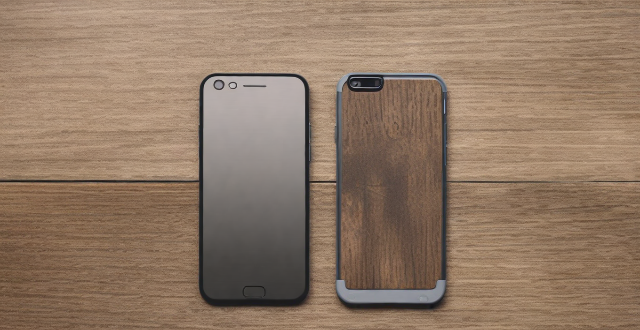The text discusses the different types of materials used in phone cases, including plastic (both hard and soft), silicone, rubber, metal, leather, wood, carbon fiber, and fabric. Each material has its own set of benefits and drawbacks, such as durability, grip, protection against impact, water resistance, ease of cleaning, style, heat conduction, eco-friendliness, strength, and design. The choice of material depends on the user's priorities, whether it's style, protection, comfort, or a combination of these factors.

Different Types of Materials Used in Phone Cases
Phone cases are an essential accessory for many smartphone users. They not only provide protection against accidental drops, scratches, and other types of damage but also offer a way to personalize and customize the appearance of your device. There is a wide range of materials used in phone cases, each with its own set of benefits and drawbacks. Here are some of the most common types:
Plastic
Plastic is one of the most popular materials used in phone cases due to its lightweight nature and affordability. It comes in two forms: hard plastic and soft plastic.
Hard Plastic
- Durable: Resistant to cracks and breaks.
- Rigid: Offers good protection against bumps and falls.
- Variety: Available in various colors and designs.
Soft Plastic
- Flexible: Easier to put on and take off.
- Shock-absorbent: Provides cushioning against impact.
- Cost-effective: Generally cheaper than hard plastic cases.
Silicone
Silicone cases are known for their soft, flexible texture and ability to absorb shocks.
- Non-slip grip: Prevents the phone from sliding out of hands or surfaces.
- Water-resistant: Can protect against minor splashes and spills.
- Easy to clean: The material doesn't attract dust and can be washed easily.
Rubber
Rubber cases are similar to silicone but have a firmer feel and may offer more durability.
- Enhanced grip: Provides a secure hold on the device.
- High-impact protection: Absorbs shocks better than many other materials.
- Long-lasting: Withstands wear and tear over time.
Metal
Metal cases offer a premium look and feel while providing robust protection.
- Stylish appearance: Gives a sleek and modern touch to your phone.
- Magnetic mount compatible: Some metal cases allow for magnetic car mounts.
- Heat conduction: Can dissipate heat generated by the phone.
Leather
Leather cases add a touch of luxury and sophistication to your device.
- Classy look: Exudes elegance and professionalism.
- Aging beauty: Develops a unique patina over time.
- Lightweight yet protective: Combines style with functionality.
Wood
Wooden cases provide a natural aesthetic and are often sustainably sourced.
- Eco-friendly: Made from renewable resources.
- Unique grain pattern: Each case has a distinct wood grain.
- Warm to the touch: Offers a pleasant tactile experience.
Carbon Fiber
Carbon fiber cases are known for their strength and lightweight properties.
- Ultra-strong: Rivals metal in terms of protection without the weight.
- Sleek design: Has a modern, high-tech appearance.
- Minimal bulk: Maintains a slim profile on the phone.
Fabric
Fabric cases introduce a softer, more casual style to phone protection.
- Textured feel: Provides a comfortable grip.
- Breathable material: Helps prevent the phone from overheating.
- Vibrant patterns: Often features colorful designs and prints.
In conclusion, choosing the right material for your phone case depends on your priorities—whether it's style, protection, comfort, or a combination of these factors. Each material offers different benefits, so consider what's most important to you before making your selection.